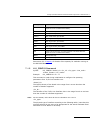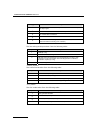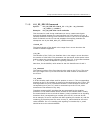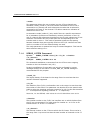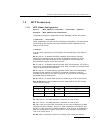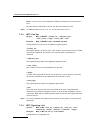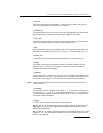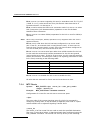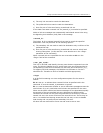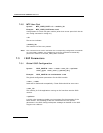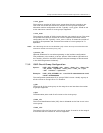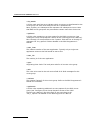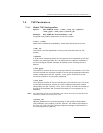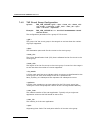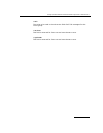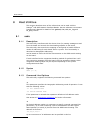
Dialogic
®
DSI SPCI Network Interface Boards Programmer's Manual Issue 5
101
a) The only link set used to reach the destination.
b) The preferred link set used to reach the destination.
c) One of a pair of links sets forming a combined link set.
In the latter two cases a second link set (second_ls) must also be specified.
Within a link set messages are automatically load-shared across links using
the Signaling Link Selection (SLS) field in the message.
<second_ls>
The linkset_id of an optional second link set used to reach the specified
destination. This may be either of the following options:
a) The secondary link set used to reach the destination only on failure of the
preferred link set.
b) One of a pair of links sets forming a combined link set over which load-
sharing takes place. (in this case bit 1 must also be set in the <flags>
parameter of the command).
When a second link set is specified the user must also set bit 0 in the
<flags> field of this command.
<user_part_mask>
This is a 16 bit field used identify the user parts that are supported over this
route. The bits are labelled 0 to 15 and for each user part supported the bit
corresponding to the Service Indicator for that user part must be set. (e.g.,
To support just ISUP messages, the ISUP Service Indicator is 5 so bit 5
should be set. Therefore a value of 0x0020 would be appropriate).
<flags>
A 16 bit field containing run-time configuration options for the route as
follows:
Bit 0 is set to 1 to indicate that a second link set is specified within the
command. If zero the second_ls parameter is ignored.
Bit 1 is used to determine whether or not to load-share messages across the
two link sets. It is only used when two link sets are specified for the route.
When set the MTP3 module load-shares messages for the destination equally
across each of the two specified link sets. Otherwise the MTP3 module
considers the normal link set to be the preferred link set and only uses the
second link set in the event of failure of the normal link set. The bit may be
set to 1 to enable load-sharing across the two link sets, or zero to disable
load-sharing and use preferred and secondary link sets.
All other bits are reserved for future use and must be set to zero.



